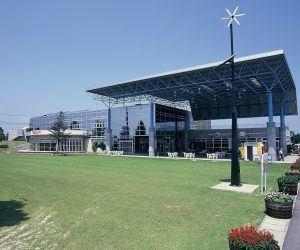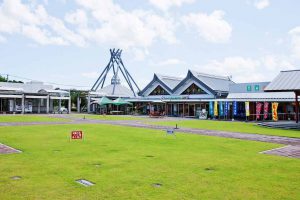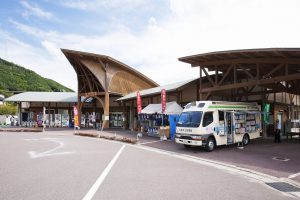Roadside Station Kawabe Yasuragi-no-Sato
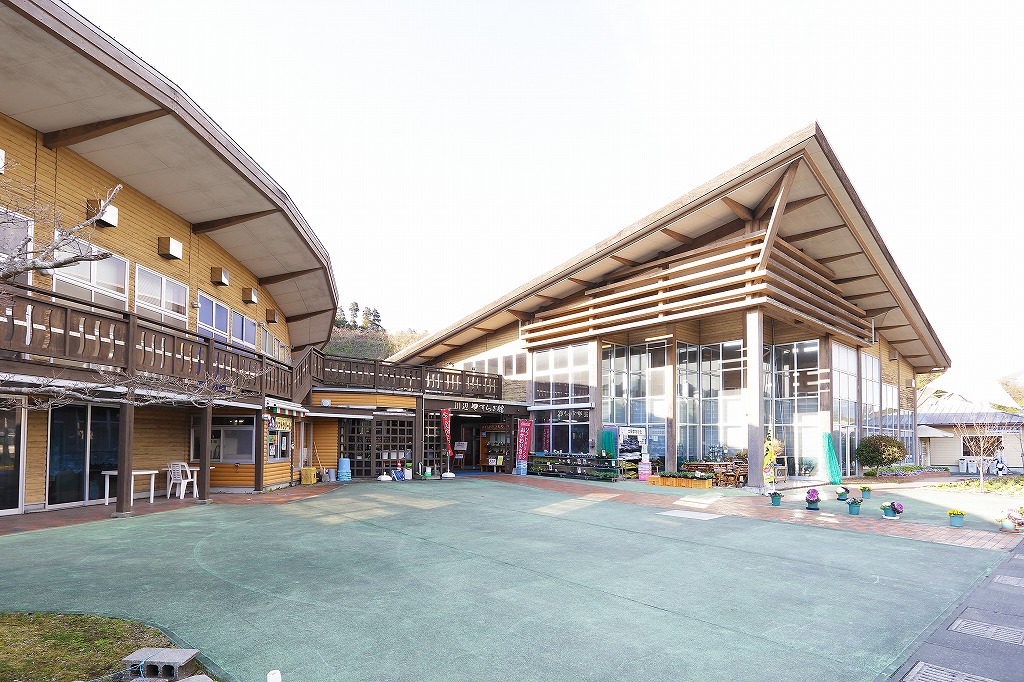
Index
Yose Tofu and Ice Cream
Original made by the roadside station
Local products are the mainstay of roadside stations, and this station offers a wide variety of local specialties from Kawanabe, Chiran, and Ei in Minami-Kyushu, including local brand beef from Kawanabe, Black Satsuma chicken, soba noodles from Kawanabe Town, and Chiran tea, which is known for its high quality. In addition, the processing plant produces Yose-Tofu (tofu) made from Kawabe-grown Fukuyutaka soybeans, ice cream made from Kagoshima milk, bread, and other products. In addition to the standard vanilla ice cream, there are 10 kinds of ice cream, including melon, strawberry, and kumquat produced in Kawabe.
Roadside Station Kawabe Yasuragi-no-Sato Basic Information
| Location | 6910 Shimizu, Kawabe-cho, Minami-Kyushu City, Kagoshima Prefecture |
|---|---|
| Phone number | 0993-58-3131 |
| Business Hours | 9:00-18:00 Restaurant 11:00-15:00 (14:30 LO) |
| Access | Approximately 20 minutes from Kawabe IC of Ibusuki Skyline |
| Official HP | https://www.yasuraginosato.com/ |
Roadside Station Kawabe Yasuragi-no-Sato Map
Gourmet Information of Roadside Station Kawabe Yasuragi-no-Sato
The best place to eat: Kawanabe Beef Steak Bowl Set Meal
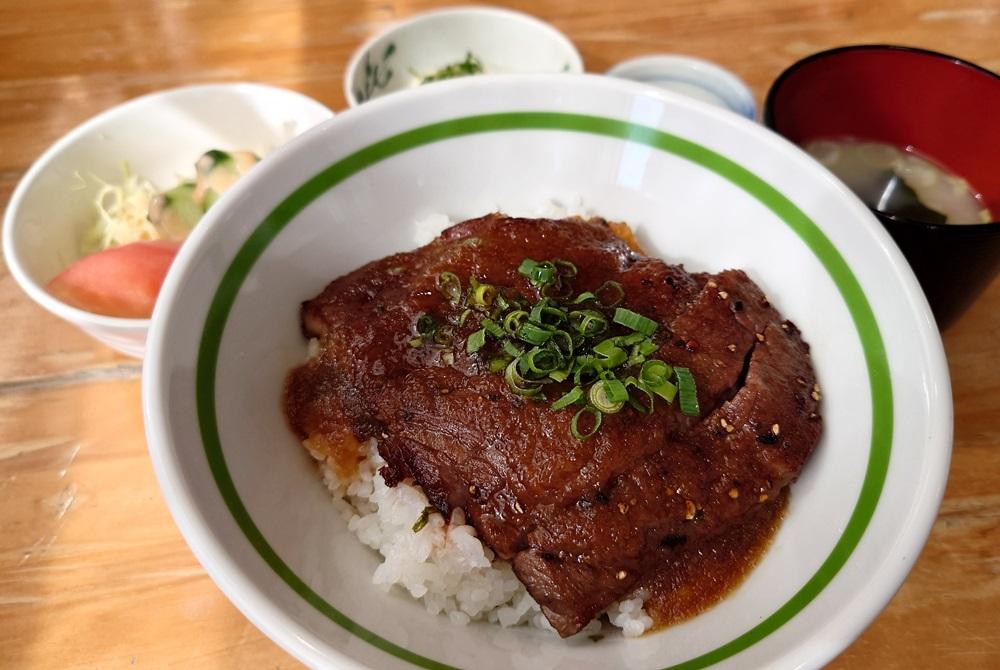
The restaurant "Turfleur" attached to the roadside station serves "Kawanabe beef" with A4 grade or higher as the brand rule. The beef boasts excellent meat and fat quality. The "Kawanabe Beef Steak Bowl Set Meal" is made from high-quality shoulder loin with a good balance of lean meat and sinew. The "Kawanabe Beef Steak Bento" is also available for take-out, so how about a luxurious outdoor lunch?
Chicken sashimi, a local specialty
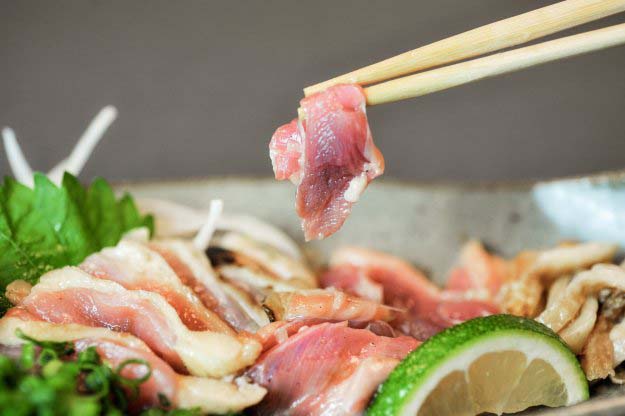
In Kawabe Town in inland Kagoshima Prefecture, "sashimi" has traditionally meant sashimi made from locally raised chicken. The chicken sashimi sold at the roadside station is "Kuro Satsuma Chicken," which was created in 2006 and is the "third black brand" following Kagoshima black wagyu beef and Kagoshima black pork. The meat has fine muscle fibers and is firm, crispy, and soft to the touch with moderate elasticity. Moreover, the meat is rich in amino acids, which are umami ingredients, and has more fat than other jidori (locally raised chicken). Furthermore, even when grilled, the chicken does not become tough, and the umami flavor remains intact. It is truly a good thing. The sashimi of Kuro Satsuma chicken at the roadside station is shipped directly from the chicken farmers every morning.
© K.P.V.B.
The station's pride and joy is this Yose-Tofu (Tofu mixed with soybeans)
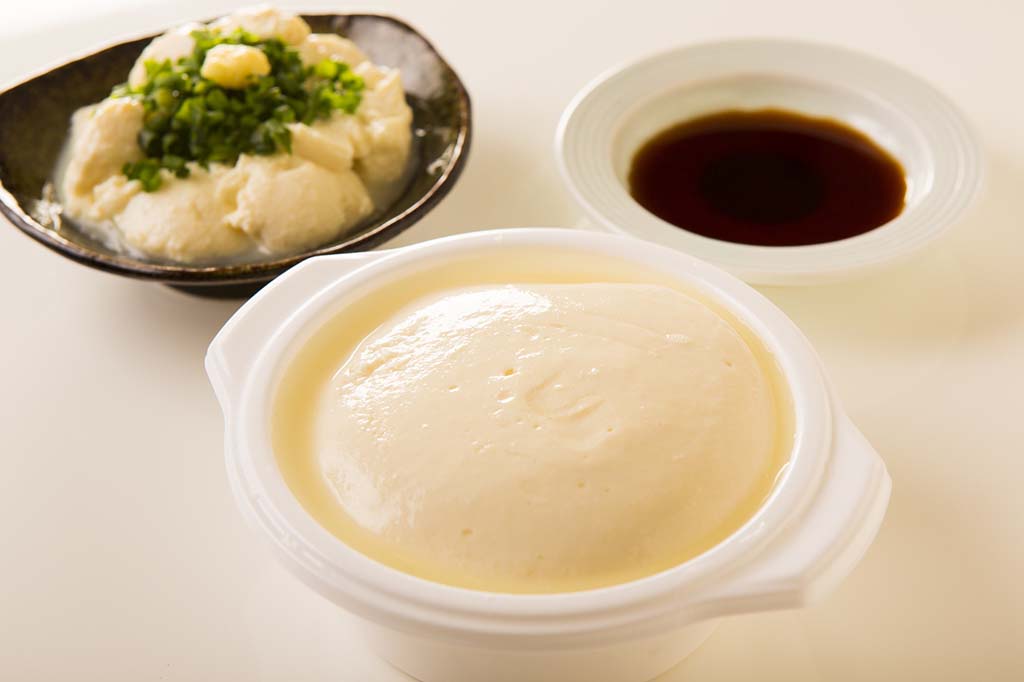
Yose-Tofu is by far the most popular product at the station's processing plant, and has remained unwaveringly popular since its opening in 2000. The tofu is made from non-genetically modified Kawabe-grown Fukuyutaka whole soybeans, local clean water, and nigari (a type of edible seaweed). The reason for its popularity is the rich soybean flavor and full-bodied texture. In fact, 300 units are sold on weekdays, and twice as many on Sundays and holidays. The freshly made, still-hot Yose-Tofu tofu in particular has a sweet taste. 151 yen per tofu block (tax included).
©P.K.N.
Around Roadside Station Kawabe Yasuragi-no-Sato
Kawabe Butsudan Kogei Kaikan
If you want to have fun in the area
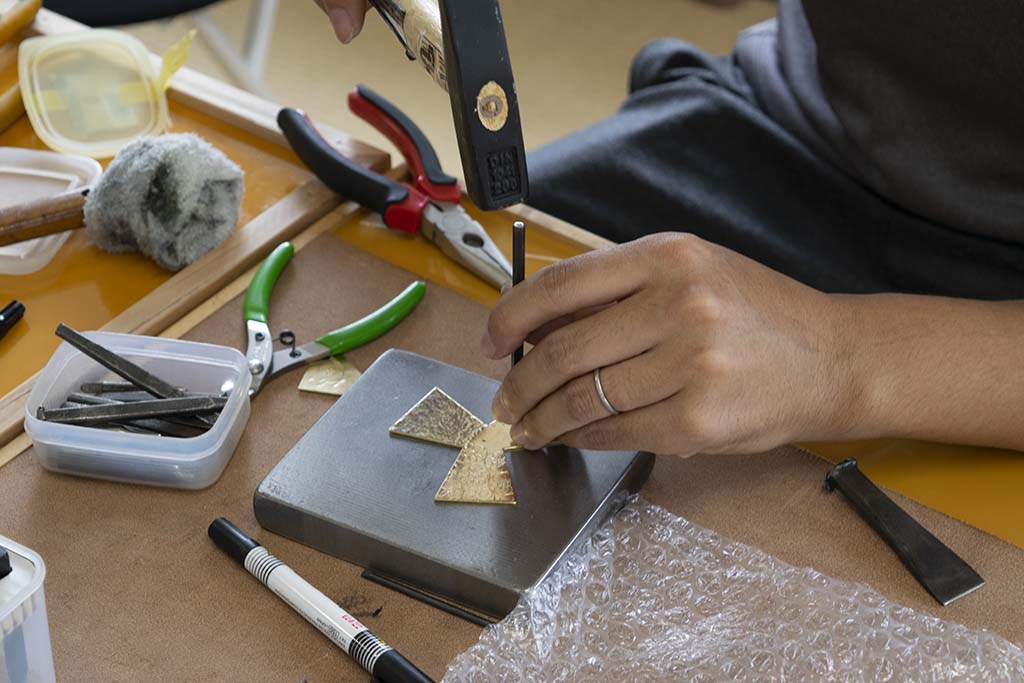
Kawabe Town in Minami-Kyushu City is a major producer of butsudan (Buddhist altars). Kawabe Butsudan" was designated as a national traditional craft in 1975, ahead of other butsudan production areas in Japan, and was the first butsudan to be designated as a national traditional craft. Today, in addition to traditional butsudan, a project team called "Kawabe Terendan" is taking on the challenge of creating a variety of products that combine traditional techniques with innovative design. Butsudan (Buddhist altars) are made by bringing together a variety of traditional Japanese techniques such as carving, shrine carpentry, lacquering, and gold leaf application. At the Kawabe Butsudan Kogei Kaikan, a five-minute drive from the station, visitors can try their hand at making maki-e, carved metal, and mother-of-pearl inlay accessories.
| Official Site | https://www.kawanabe-butudan.or.jp/ |
|---|
Kiyomizu Makujibutsu (Buddhist image of Buddha)
If you want to have fun in the area
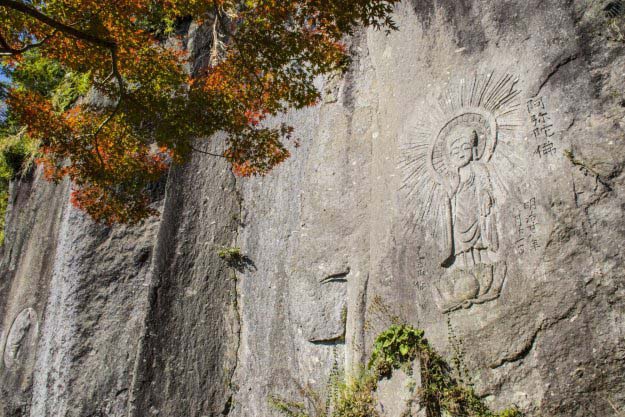
The surrounding area has a deep connection with Buddhism, and there are many Buddhist-affiliated historic sites. Among them, the Shimizu Magaibutsu (Buddha images on cliffs) group is the largest in scale. The spatial scale is 20 m high and 400 m wide along the Manose River, the temporal scale spans approximately 800 years from the Heian to Meiji periods, and the numerical scale includes 200 memorial pagodas and Buddhist statues. Each of these is unparalleled. More than 1,000 temples in Satsuma were destroyed and forced to close due to the abolition of Buddhism in the early Meiji period (1868-1912). In this sense, the temple is of great historical and Buddhist value. It has a solemn atmosphere with the largest five-ring pagoda in Japan, a moon-ring large Brahma statue, and a statue of the eleven-faced Kannon. Designated as a prefectural historic site.
©P.K.N.
Chiran Buke Yashiki and Chiran Peace Museum for Kamikaze Pilots
If you want to have fun in the area
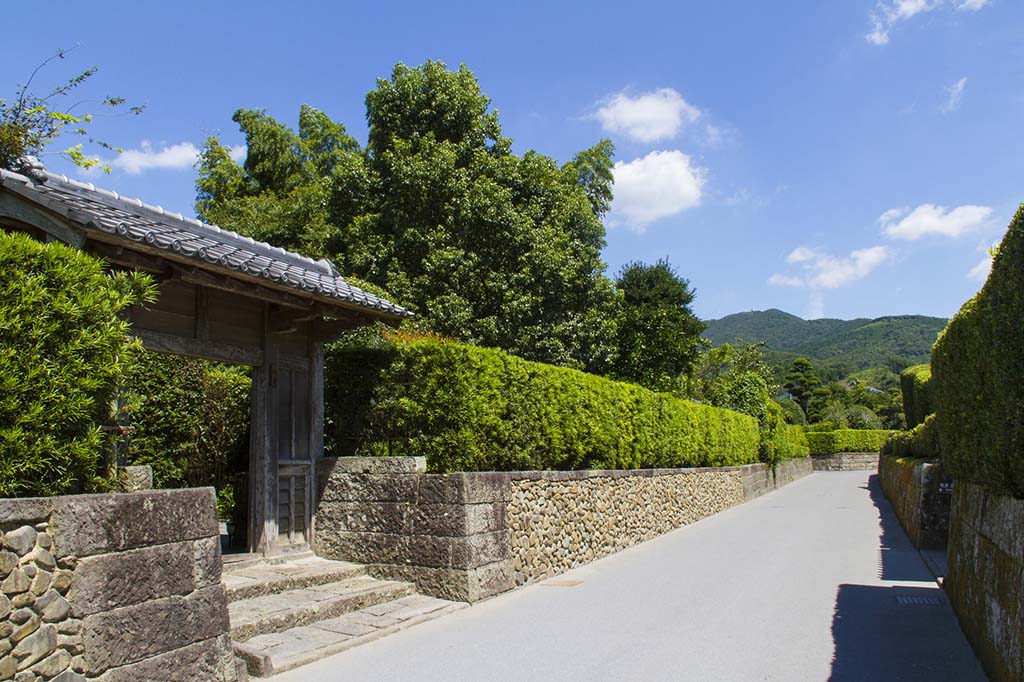
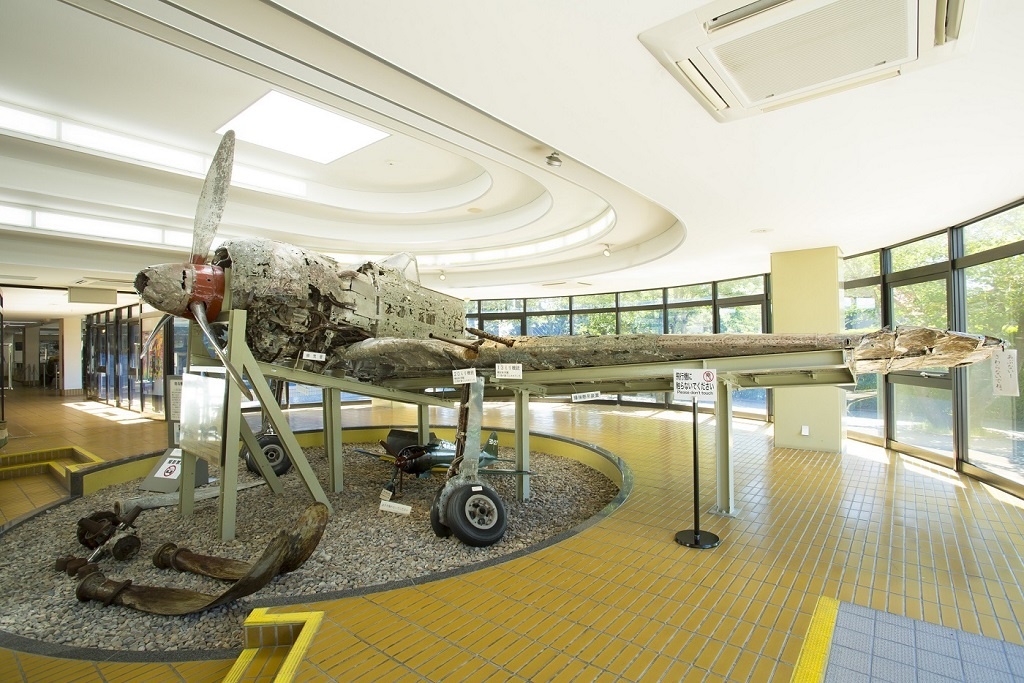
Kawabe-cho's neighboring town, Chiran-cho, is called "Satsuma's Little Kyoto" because of the samurai residences that remain from the era of the feudal government. It is designated as a national Important Preservation District for Groups of Traditional Buildings, and is also one of the constituent assets of the "Japan Heritage" list. Samurai residences line both sides of the road for about 700 meters, and seven samurai residences' gardens are open to the public. All of them are designated as national scenic spots. The gardens were created by a gardener invited from Kyoto. With the exception of "Mori Shigemitsu Garden," which is a pond garden, all the other gardens are in the dry landscape style without water.
The Chiran Peace Museum for Kamikaze Pilots must not be forgotten when talking about Chiran Town. During the Battle of Okinawa at the end of the Pacific War, a total of 439 young men from the Chiran Army base went to war as Kamikaze pilots. They were not allowed to return home alive, and their pictures, belongings, and suicide notes to their families are on display here. The exhibition is a tear-jerker and makes us think about the meaning of war and the preciousness of peace.
© P.K.N.
© P.K.N.

